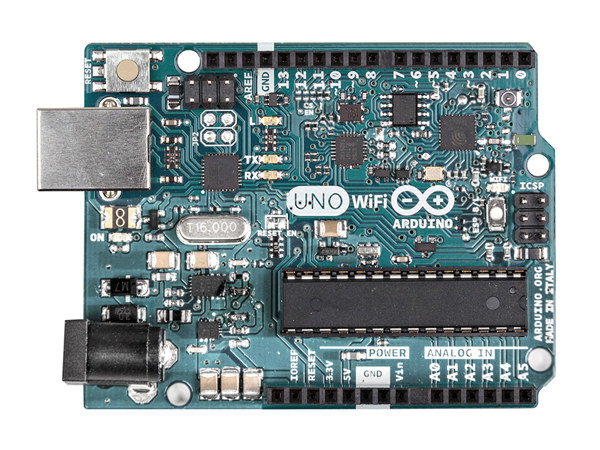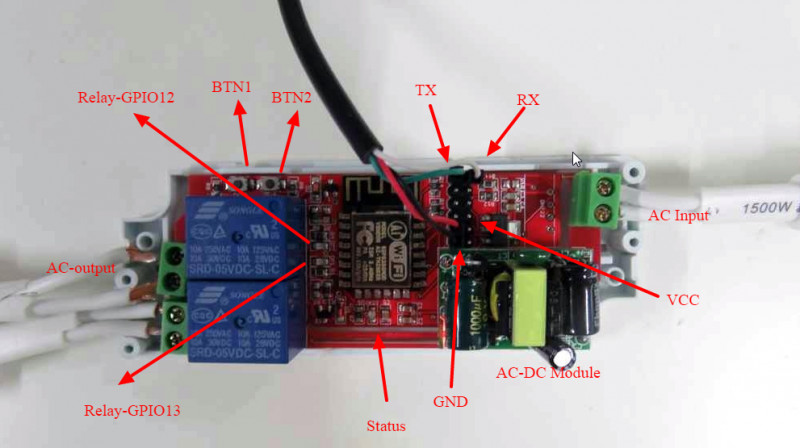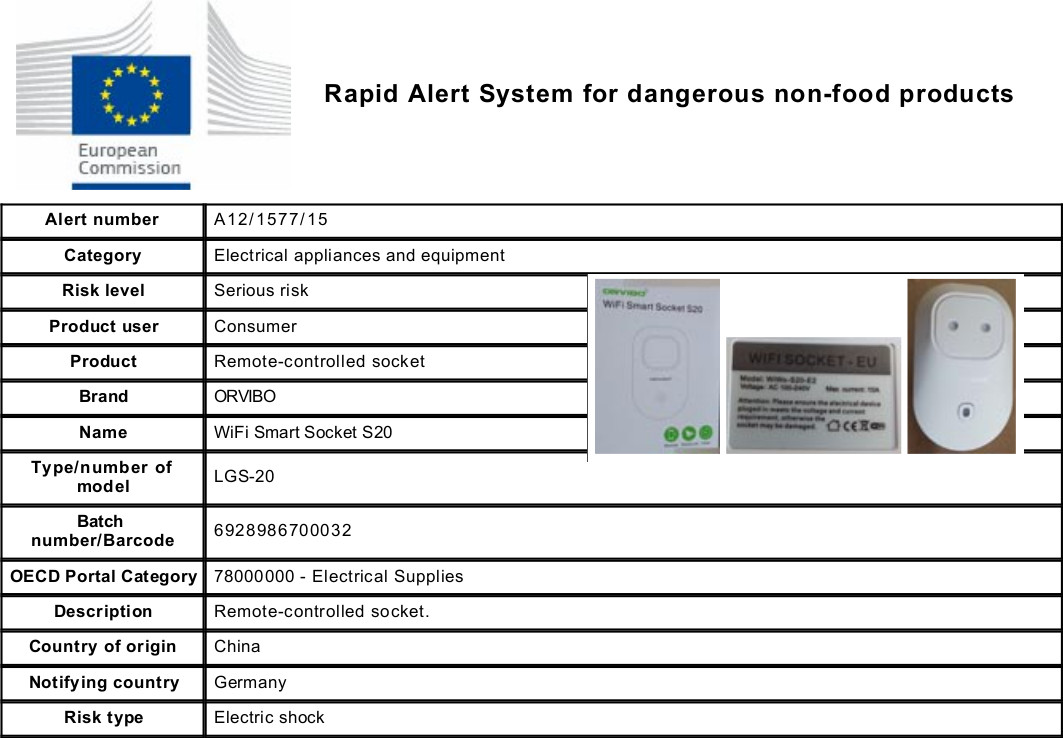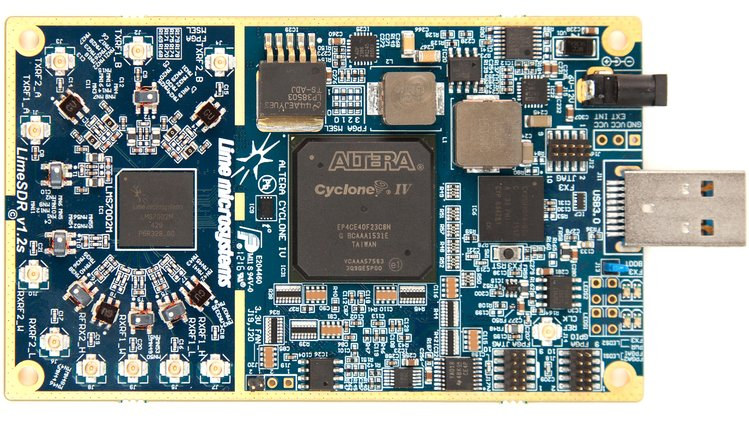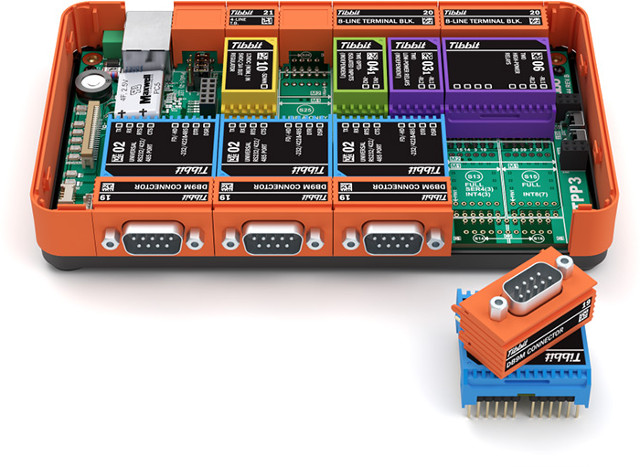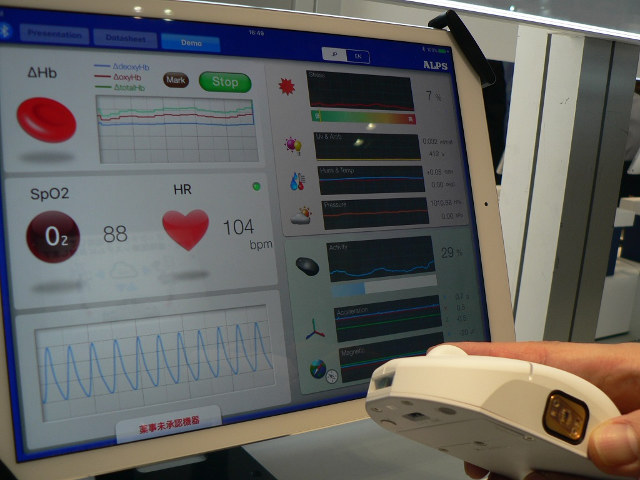Arduino.org (Arduino Srl) has launched Arduino UNO WiFi board, bringing Arduino (Atmel ATMega328P MCU) and ESP8266 together, and adding WiFi to the popular Arduino UNO board, while keeping all existing interfaces and headers. Arduino UNO WiFi (A000133) board specifications: Arduino part MCU – Atmel ATmega328 8-bit AVR MCU @ 16 MHz with 32 KB flash Memory, 2KB SRAM, 1KB EEPROM Digital I/O pins – 14, with 6 PWM and UART Analog Input Pins – 6 DC Current per I/0 – 40 mA Misc – Reset button Operating Voltage – 5 V ESP8266 part SoC – Expressif ESP8266EX Tensilica Xtensa LX106 processor @ 80 MHz Storage – 4MB SPI flash Connectivity – 802.11 b/g/n WiFi @ 2.4 GHz, wake up time < 2 ms; Antenna: PCB and IPX Misc – Bootloader button, WiFi LED Operating Voltage – 3.3 V Common specs USB – 1x USB device port Input Voltage – 5-12 […]
Tacterion Brings Capacitive Touch to Smart Clothing and Various Materials or Surfaces
With the advance of smartphones and other mobile devices, we’ve all been used to capacitive touch screens, but Tacterion, a German company born out of the Institute of Robotics and Mechatronics, at the German Aerospace Center, has designed “artificial skin” sensors that bring capacitive touch and other features to all sort of materials. Since the company wants to protect its IP they don’t disclosed much details about the inner working of their sensors: The patent protected technology is completely polymer-based. The technological principle are sensitive elements that measure based on transition resistivity: The more pressure is exerted on the polymer-based, electrically conducting elements, the lower the transition resistivity is, which is being measured continuously. Using our highly integrated high-speed readout electronics, a matrix of sensor elements can be combined to form sensitive surfaces. The readout electronics provides information regarding pressure and its distribution at a frame rate of 400 Hz. […]
Brixo are LEGO Blocks for IoT and Robotics Applications (Crowdfunding)
Brixo, an Israeli start-up, has designed LEGO compatible blocks – also called Brixo – that conduct electricity, embed sensors, Bluetooth connectivity LED lights, or even motors. You simply use them as any LEGO blocks, but you can control them using light, sound, or your smartphone. There are three type of blocks Connector blocks – Made of chrome and used to connect the trigger blocks to the action blocks. They act like wires. Trigger blocks – They include Bluetooth connectivity, a proximity sensor, a light sensor, or/and a sound sensor Action blocks – LED lights or motors blocks They also have a smart battery block with Bluetooth LE designed for a 9V rectangular battery. Now get some of your existing LEGO accessories, and start having fun. The demo below shows the battery block on the right, some connector blocks, and various triggers and action blocks. You don’t even need any smartphone […]
Electrodragon WiFi IoT Relay Includes ESP8266 Module, AC Power, and Enclosure for $6
Thanks to ESP8266, the cost of WiFi relays has dramatically come down, but so far, I could not find an all-in-one solution with ESP8266, relay, AC power and enclosure, and for example I’m still using NodeMCU board, a relay board, a USB power supply, and put all that into a plastic jar in order to control a water pump. It works but it’s not ideal, and solutions like Wemos D1 mini with relay shield improves things further, but Electrodragon has come with a connect-and-play WiFi IoT relay that integrates everything including the case for $6 + shipping. Wifi IoT Relay Board Based on ESP8266: WiFi module – ESP-12F based on Espressif ESP8266EX WiSoC Relays – 2x Songle SRD-05VDC-SL-C relays supporting 125VAC/10A, 250VAC/10A, 30VDC/10A, 28VDC/10A Input/Output – 3x terminal blocks for relay and power Expansion – 12-pin header with Rx/Tx, GPIO4, Btn2, GPIO15, 5V/GND, ADC, GPIO5, Btn1, OUTPUT1, and 3V3 Debugging […]
The European Version of Orvibo Wiwo S20 Smart Socket Has Been Found to Pose a “Serious Risk”
Orvibo Wiwo S20 is a WiFi smart socket that can be controlled by a smartphone and some people are using it with OpenHAB open source automation software. The socket has four versions with with US, UK, EU or AU plug types, and some of my clever readers mentioned that the European plug was mot likely NOT compliant with European regulations, was likely dangerous, and should be limited to 2.5A instead of 10A. It turns out they were right, as the European commission issued a safety notice last declaring Orvibo Wiwo S20 to be dangerous with risk of electric shock. The document further explains: The shape of the socket is not correct: when a plug is inserted the live pins of the plug are accessible. Appliances which should be earthed can be connected to the socket but the socket itself is not earthed. The product does not comply with the requirements […]
LimeSDR Open Source Hardware Software Defined Radio Goes for $199 and Up (Crowdfunding)
Canonical and Lime Micro showcased SoDeRa software defined radio (SDR) a couple of months ago, with a promise to launch a crowdfunding campaign later this year. They’ve fulfill their promise, and launched the open source SDR, renamed to LimeSDR, on Crowdsupply. LimeSDR board specifications: FPGA – Altera Cyclone IV EP4CE40F23 Altera FPGA compatible with EP4CE30F23 System Memory – 256 MB DDR2 SDRAM RF Lime Microsystems LMS7002M RF transceiver with continuous coverage of the frequency range between 100 kHz and 3.8 GHz; 61.44 MHz bandwidth 4 x TxOut and 6 x RxIn U.FL connectors Power Output (CW): up to 10 dBm Wi-Fi, GSM, UMTS, LTE, LoRa, Bluetooth, Zigbee, RFID, Digital Broadcasting, configurable through apps. USB – 1x micro USB3 via CYUSB3014-BZXC Cypress Microcontroller for control, data transfer and power Misc – Status LEDs, RGB LEDs, 4x switches Power – USB or external power supply Dimensions – 100 mm x 60 mm The board […]
Tibbo Project System is a Modular Linux IoT Prototyping Platform based on TI Sitara Cortex A8 Processor
If you’ve found yourself needing to quickly demo a system that does not look like a mess of wire to a customer, or your project is requires low production volumes, making the cost of designing your own and mass-producing the hardware prohibitive, Tibbo Project System might be worth looking into. It features an almost bare board powered by Texas Instruments Sitara processor, and a large area for Tibbit blocks to add features as needed, as well as an enclosure. Size 3 Linux Project PCB (LTPP3) specifications: SoC – Texas Instruments Sitara AM335x Cortex A8 processor up to 1.0 GHz System Memory – 512 MB DDR3 Storage – 512 MB NAND flash, 2KB EEPROM, optional micro SD slot Connectivity – 10/100M Ethernet (RJ45), optional WiFi (via LW1000 module) and GPRS connectivity (via Tibbit #47) Expansion – 51 I/Os: 7x tiles 14x sockets for Tibbit module including 4x with UART capability up […]
Alps Electric Smart Mouse Would Let Your Employer Monitor Your Stress Level
Work and life in general can be very stressful, and a Japanese company called Alps Electric wants to enable employers to monitor their staff mental stress level using a mouse that includes a “near-infrared spectroscopic sensor” reporting hemoglobin level, oxygen saturation and pulse, as well as an environmental sensor for temperature, humidity, etc… data. There’s no special way to use the mouse, and the end-user would just control the mouse normally. with all data apparently sent to a centralized system. The mouse was demonstrated at Medtec Japan 2016, on April 20 to 22 in Tokyo. The sensor development is scheduled to end by Q1 2017, with samples shipping in the spring of 2017. There will certainly be ethical questions raised: Is that a welcome addition to the workplace to help employer better take care of their health, or a step too far and an invasion of privacy? Via Nikkei Technology […]


